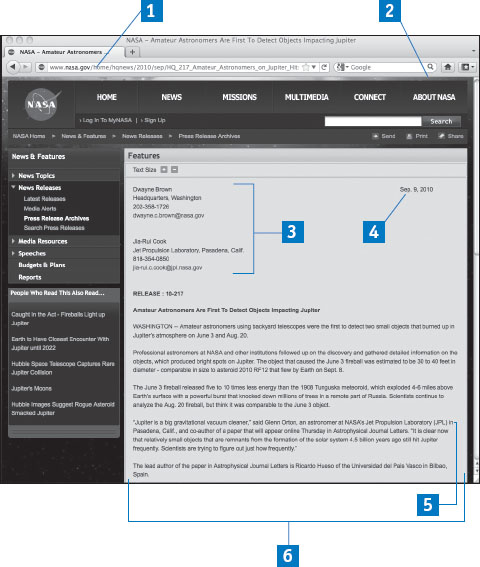From Source to Speech: Evaluating Web Sources
Printed Page 72
From Source to Speech
Evaluating Web Sources
Evaluating Web Sources
Check the Most Authoritative Web Sites First
Seek out the most authoritative Web sites on your topic. If your speech explores the NBA draft, investigate the NBA’s official Web site first. Check government-sponsored sites such as www.usa.gov. Government-sponsored sites are free of commercial taint and contain highly credible primary materials.
Evaluate Authorship and Sponsorship

Examine the domain in the Web address—the suffix at the end of the address that tells you the nature of the site: educational (.edu), government (.gov), military (.mil), nonprofit organization (.org), business/commercial (.com), and network (.net). A tilde (~) in the address usually indicates that it is a personal page rather than part of an institutional Web site. Make sure to assess the credibility of each site, whether it is operated by an individual, a company, a governmental agency, or a nonprofit group.

Look for an “About” link that describes the organization or a link to a page that gives more information. These sections can tell a great deal about the nature of a site’s content. Be wary of sites that do not include such a link.

Identify the creator of the information. If an individual operates the site, does the document provide relevant biographical information, such as links to a résumé or a listing of the author’s credentials? Look for contact information. A source that doesn’t want to be found, at least by e-mail, is not a good source to cite.
Check for Currency

Check for a date that indicates when the page was placed on the Web and when it was last updated. Is the date current? Web sites that do not have this information may contain outdated or inaccurate information.
Check That the Site Credits Its Sources and That Sources Are Trustworthy

Check that the Web site documents its sources. Reputable Web sites document the sources they use. Follow any links to these sources, and apply the same criteria to them that you did to the original source document. Verify the information you find with two other independent and reputable sources.

Check the Web Site for Objectivity

Evaluate the information for bias. Look for fallacies in reasoning, distorted data, and oversimplification of information. Check that opinions are backed by reliable sources and that important information is not missing. Look for signs of conflict of interest, such as whether the information is advertiser-driven.